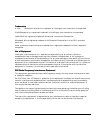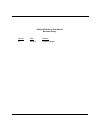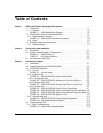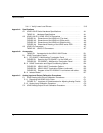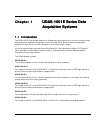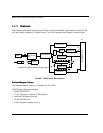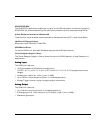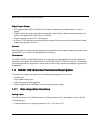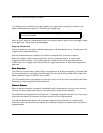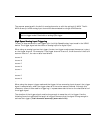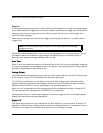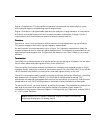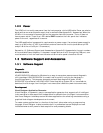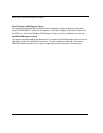
1-5
• Programmable gains are 1, 10, and 100 which translate to a full-scale input of 0-10 V, 0-1.0 V,
0-0.1 V, ±10 V, ±1.0 V, ±0.1 V, ±5 V, ±0.5 V, and ±0.05 V.
• The analog input section has 16 single-ended or 8-differential analog input channels.
The analog input section has a first-in-first-out (FIFO) buffer for high-speed capturing of data up
to 100 kHz.
An analog trigger is also provided to initiate high-speed conversions based on a voltage transition
on a selected analog input channel, or on an external TTL level signal. A programmable crystal-
based rate generator regulates high-speed conversions.
High-Speed Analog Input ModeHigh-Speed Analog Input Mode
High-speed mode uses the rate generator (described below), or an external input to start data
conversions. The use of the rate generator or an external signal to start conversions is referred to
as pacing.
On the UDAS unit, the rate generator is able to provide rates from 0.477 conversions per second
to 100,000 conversions per second. These conversions are either performed on a single input
channel, or performed on a range of input channels by using the channel scanner (described
below).
When the conversion is complete on the current channel, the channel scanner automatically
selects the next channel. The term high-speed refers to the use of pacing to automatically begin
the conversions. The speed of the actual rate of conversions can be controlled by using the rate
generator. See Rate Generator, on page 1-6.
Starting and Stopping the High-Speed Analog Input ModeStarting and Stopping the High-Speed Analog Input Mode
There are several methods to start and stop conversions available on the UDAS:
• Start with trigger, Stop with software
• Start with trigger, Stop after N samples
• Start with software, Stop N samples after trigger
• Start with software, Stop with software
• Start with software, Stop after N samples
Starting Conversions
To start the conversions, use either a trigger or a software command. The trigger can be an
external digital TTL level input, or an analog input. For an external TTL signal, the slope (rising
edge or falling edge) must be specified. Use the external input pin to provide this input.



